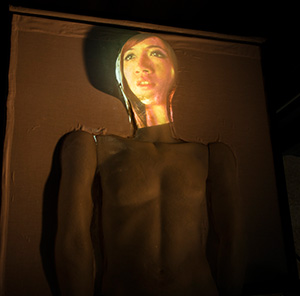Dr. Greg Welch and Innovation and Collaboration in the Knight Nation
April 6, 2015
“It’s an off-the-rack life.”
Referencing a quote, by infamously independent Captain Hawkeye Pierce from the 1970 movie, M*A*S*H, UCF professor Greg Welch spoke to his experience as a collaborative innovator. Creating something new, bridging gaps, and broadening people’s ideas of what’s possible begins with standard “off the rack” options.
In addition to being the Florida Hospital Endowed Chair in Healthcare Simulation, Welch’s penchant for collaboration is evident in his roles at UCF as professor and researcher in the College of Nursing, the Institute for Simulation & Training (IST), and the College of Engineering & Computer Science.
—
In IST, his office sits across the hall from a room full of robotic human forms. Among them is a patent-pending human patient simulator designed for training future medical professionals with a more realistic, human-like experience.
Currently available patient simulators come with an either/or compromise. Some robotic patient simulators offer measurable vital signs and a voice, but lack the invaluable context of facial expression and other visual symptoms. Others can graphically display visual symptoms, expressions, and emotional context but don’t have physical forms like real humans, become warm with fever or cold when in shock, or present the feeling of a pulse.
Of the current options, Welch says, “Some call such patient simulators ‘rubber humans’ because they resemble lifeless clothing store mannequins covered by flesh-colored rubbery ‘skin.’ This isn’t surprising as historically they were developed for training anesthesiologists and anesthesiologists don’t need talking patients. If their patients are talking, something is wrong!”
The patient simulator with its rear-projected imagery on a human-shaped plastic shell can portray real-life patient scenarios, embedded on a real hospital bed. It portrays measurable vital signs, talks, and shows emotion through facial expressions. Hidden cameras can sense touch and pair with computers able to make the patient respond appropriately.
The project is coming to life in spite of its unmet need for funding. A grant from UCF’s IST funded the construction of a prototype, but more funding is needed for development and application.
As Welch says, “It’s the chicken and egg problem, as it always is in research, right?”
When experimental results demonstrate effectiveness, funding often comes along. But to get the experimental results, the project needs momentum fueled by funding.
For now, the project includes a separate head with integrated touch sensing that could be attached to the “rubber humans” currently available for future-nurse-to-simulated-patient interaction.
“Now, we’re going to go to the College of Nursing to do an experiment. We’ll take the head off of one of the patient simulators, and substitute this head. That way, we can project facial expressions and talk to the patient. We’ll have the nurses interact with and diagnose the patient then debrief on how they felt about the patient and their experience.”
It’s clear there’s an underlying driving force behind Welch’s passion for collaboration and he recalls the words of another computer scientist, Fred Brooks: computer scientists are toolsmiths.
“We exist to build tools for other people. Why do you design new sorting algorithms? Why do you want to sort names faster? Well, because somebody needs that. So in some sense, what we do should be driven by the needs of other people. Area specialists, health care professionals, nurses, doctors, say ‘Here’s our problem: we can’t train X, we can’t do X,’ and I’m driven to help.”
He also likes to come at problems from the other side. “I like to share ideas for new technologies, and see whether my colleagues think there might be a match to a problem they have.”
“I love that stuff, and I grew up loving that stuff. So, for me, to be in a position where I can build things like this simulated patient system, but at the same time talk to people who have problems, and bring to bear computer algorithms, hardware, optics and mechanical engineering, and mix them up and develop something that’s new is great fun.”
With the new human patient simulator and many other projects powered in part by his passion for interdisciplinary collaboration, what’s fun for Dr. Greg Welch leads to more fundamentally functional innovation at UCF.
Read more about the human patient simulator and other technologies at the UCF Technology Locator.
>>Written by Lisa Bottomley

